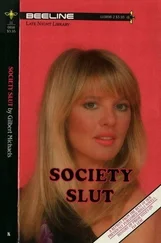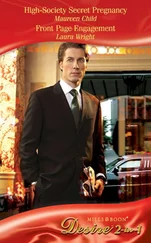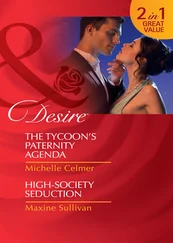Fordism was based on mass production and mass consumption alike. In the 1920s, the world of consumption began to develop into a new cultural sphere. In short, a consumption revolution took place. 13Goods, which had previously served instrumental purposes above all, were now increasingly subjected to culturalization – that is, they started to become narrative, aesthetic, expressive, or ludic ends in themselves. Consumption drastically broadened the scope of culture and its processes of valorization beyond the confines of bourgeois art and education. The central point is this: in that goods were now currying the favor of consumers within a commercial market constellation, culture was no longer tied to the state but rather to the economy. Here, in individual segments, it is already possible to observe mechanisms of cultural innovation and differentiation that resemble something like a “fashion cycle.” 14That said, organized modernity posed two limitations. On the one hand, the culturalization of the world of goods was quite limited in comparison to the situation to come in late modernity. Most goods primarily served instrumentally rational purposes or the social function of preserving status. On the other hand, the value of these objects as singular entities was often limited. Given the influence of Fordism, they were mostly standardized, and in this sense we are dealing here with a mass culture . 15Even the consuming subject in organized modernity was not concerned with being distinct but rather with demonstrating his or her general normality: the ideal model was that of “keeping up with the Joneses.” 16
Within the framework of this post-bourgeois culture, audiovisual media acquired a specific status. This was especially true of movies, which became the center of what came to be called the culture industry. 17In the case of films, the new field of consumption intertwined with the old field of art. Films are clearly culturalized goods with both narrative-hermeneutic and aesthetic qualities. At the same time, every film promises something non-interchangeable and different, so that a system of valorization formed around them to gauge their value and appeal. In the cinematic sphere, the regime of aesthetic novelty, which constantly demands new originality and surprises, is even more prevalent than it is in bourgeois art. The social field of the film was pioneering to the extent that, as of the 1920s, it established a broad and hypercompetitive market around a cultural good whose respective value is uncertain and contentious.
To a certain degree, the culture industry also promoted the singularization of subjects, and especially in the form of “stars” (it would not take long, however, for such people to be denounced for their “prefabricated” nature, which did not meet the standards of bourgeois culture). 18All typecasting aside, it remains true that if a star wanted to have any power of attraction, he or she would have to be regarded as unique. In a sense, the star thus inherited the role of the artistic subject. Both cases involve the social recognition and glorification of subjective singularity, though now it was not a matter of a unique work of art but rather the performance and glamor of subjects themselves. Throughout organized modernity, the star remained an exclusive and inimitable figure who stood outside of the reality of the leveled middle-class society.
Organized modernity thus carried out its own shift in the nature of culturalization. Whereas the culturalization of bourgeois society was one of intensifying culture through the bourgeois and Romantic practices of art and education, the culturalization of organized modernity entailed the extension of culture – that is, its large-scale dissemination through consumption and mass media. Whereas bourgeois intensification was related above all to the aesthetic-hermeneutic inner world of subjects, the Fordistic extension of culture was primarily directed toward the visual surfaces of subjects and objects.
Late Modernity: Competitive Singularities, Hyperculture, and Polarization
In various constellations, processes of culturalization and singularization have thus existed throughout all of social history. In late modernity, however, they have acquired a new quantity and quality. To visualize this proliferation of the particular, look no further than NASA’s satellite images of Earth’s city lights, which show the continents at night and thus underscore the bright illumination of the world’s large cities. In a similar way, it is possible to imagine all of today’s acknowledged singularities – all of the unique objects, subjects, places, events, and collectives, which are spread across the globe in a sea of social practices and which stand out, on account of their affective heat, like brightly shining points and paths. If one were to look at similar pictures taken from the years 0, 1200, 1800, 1900, 1950, 1980, and 2000, there would certainly be a few bright points and paths to see – the old rites and magi, the churches and courtly societies, the Romantic communities and bourgeois theaters, the cinemas and the stars – but as of 1980 one would notice an explosion of brightness. Of course, not everything has been illuminated, because the logic of the general still exists in the background. But what was once the exception is now the rule: ours is a society of singularities.
In late modernity, the social logic of singularization, which is also the logic of culturalization and the intensification of affect, has become structurally formational for all of society. Since the 1970s or 1980s, the culture of the particular, which has been present since the beginning of modernity but was subordinate to the logic of the general, has itself become structurally formational on a large scale. Both the status and form of formal rationalization and its logic of the general have accordingly changed. As I have already said on several occasions, they have increasingly become a background structure – a general infrastructure for singularities. Especially in the propagation of global markets and technologies, the phenomenon of “doing generality” in globalized late modernity is obvious, but upon closer inspection it functions in many respects as a condition of possibility for the processes and arenas of singularization.
What are the causes that have led to the primacy of the logic of singularities? The transformation from organized modernity to late modernity has been due to a historical coincidence of three factors , each of which has been gaining strength since the 1970s. The three factors are the following: the socio-cultural revolution of authenticity, sustained by the lifestyle of the new middle class; the transformation of the economy into a post-industrial economy of singularities; and the technical revolution of digitalization. Their context warrants a more detailed examination.
Since the 1970s, a fundamental structural transformation has taken place in formerly industrial societies, and this has been a transformation of culture and values as well. At its heart stands the new middle class , which owes its existence to the expansion of educational opportunities and is characterized by its high cultural capital. 19In this sense, the new middle class is an educated middle class that has been active primarily in the knowledge and culture economy of post-industrial society and has been the latter’s most important standard bearer. This socio-structural transformation was accompanied by a transformation of values, over the course of which the values of materialism, duty, and acceptance, which were characteristic of industrial modernity, were replaced by a post-materialistic orientation toward self-development and actualization. 20The leading measures by which people orient their lifestyles have thus changed from those of the general and functional to those of culture and the particular. The old, rationalistic measure of one’s standard of living has been superseded by the measure of one’s quality of life. The authenticity of the self has thus gained an enormous amount of significance. One’s self should now develop into its uniqueness, and the pursuit of correspondingly authentic experiences (at work, at leisure, and in one’s private life) has become a leitmotif. All of this has added up to an authenticity revolution . This transformation of values is linked to modernity’s tradition of cultural and aesthetic counter-movements, which began with Romanticism and has ranged from the life-reform movement to the counterculture of the 1960s and 1970s. The counterculture, which is rather superficially understood with the label “1968,” represents a historical link between the cultural counter-movement of Romanticism and the new middle class. Romanticism’s comprehensive program of culturalization and singularization, which was historically no more than a subcultural phenomenon, became for the first time the central force behind the lifestyle of society’s most influential population.
Читать дальше












